Urban planning is still one of topical issues local councils have to address. It has been acknowledged and accepted that urban areas have to respond to the needs of the contemporary people. O’Callaghan and Hogben (2014) state that the needs of Australians changed significantly in the middle of the twentieth century when the economy was booming after the World War II. Population growth also played an important role in this shift. Such basic needs as food, accommodation and clothing ceased to be the only concerns of Australians who needed space for recreation. Of course, industries and businesses were also booming. City councils managed to respond quite well developing effective transportation, industrial areas and residential areas. Environmental concerns led to development of numerous recreational areas for people (Thompson 2012). The population of cities is becoming more and more diverse and city planning has to respond to this challenge as well. It is crucial to create the premise for effective communication of people having different backgrounds. The city councils have to make sure that the city has areas where people can get together and share ideas. Therefore, leisure becomes one of central elements of urban planning. This paper focuses on the logic of the neighborhood and the animating condition of community.
Liverpool, NSW, and leisure element
Liverpool, NSW, can be regarded as one of the most conspicuous illustrations of the processes mentioned above. The city is one of the oldest urban areas in the country and, hence, it went through all the transformations any other Australian city underwent. It is necessary to note that it was the area where predominantly agriculture developed. Small farms and businesses associated with agriculture were common for the city (see fig. 1).
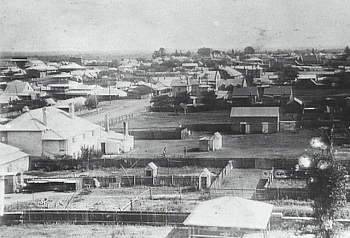
As has been mentioned above, the city started transforming in the middle of the twentieth century. Australians became more well-off, and they had new needs. Dwelling was more comfortable and well-thought. There was no need in significant yards for the houses. Transportation was also well-developed. For example, the famous railway station enabled inhabitants of Liverpool to reach the most important destinations within the city as well as in other cities. It was also easy to reach any place in the city within quite a short period. This accessibility enabled people to ignore distances and focus on their needs. Better communities and numerous recreational areas were constructed. It is necessary to add that the demographics of the city were also changing and the city’s council has always been trying to respond accordingly.
The contemporary transformation into a truly diverse urban setting draws attention of many people. The city council continues looking for ways to provide more opportunities for people to spend their leisure time and simply connect. For instance, one of the most recent plans of the city council is to make use of the area along the river and connect the river (through pathways) with the central park of Liverpool, Bigge Park (Building our new city 2014). Clearly, this will expand the recreational area significantly. It will also enable the city council to use the land in the most efficient way responding to the needs of the contemporary inhabitants of Liverpool. Apart from that, the city council also pays attention to cultural development of the city as well as its inhabitants. Construction of the “Carnes Hill Library and Recreation Facility” is an illustration of the commitment of the city council to create the environment where people will share ideas and knowledge (Channel 9 news Carnes Hill precinct clip 2015). The facility will include the library as well as sport areas, walking areas, areas for cafes. Admittedly, it will positively affect the development of communities as young generations will be able to focus on achievements and collaboration with each other.
It is necessary to add that the demographics of the city are still changing, but it is also clear that the communities of the city are very diverse. The city council has already responded to the issues associated with diversity by developing specific areas for communities (Welcome to Sydney’s best-connected, and most welcoming, new address 2014). As has been mentioned above, areas where people can get together and spend free time are quite numerous. Lots of events take place there (see fig. 2). The areas often bear traits of different cultures and promote collaboration of different communities.
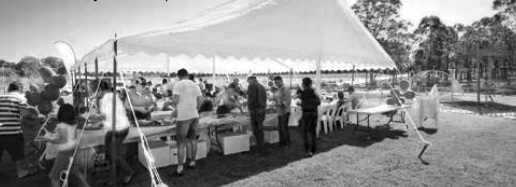
However, these efforts seem quite insufficient. It has been acknowledged that some major landmarks enable people to exchange ideas and knowledge (Thompson 2012). People need a symbolic location to focus on. As far as Liverpool is concerned, it is possible to note that the city lacks a particular landmark that could be regarded as a symbol of its diversity and collaboration between different groups of people. Liverpool has a number of museums and parks as well as other recreation facilities. However, it is impossible to find a place such as one of the major attractions of Australia, Sydney Opera House, where gems of Australian culture are displayed.
Sydney Opera House
In the 1940s-1950s, Sydney had various parks, museums, sport facilities, malls, and restaurants. Inhabitants of the urban areas were eager to get together and have a free time with their friends or family. Thus, a renowned conductor of the Sydney Symphony Orchestra, Eugene Gossens had an idea of revealing the cultural progress of Australia in the late 1940s (Huppatz 2015). He started lobbying this idea, and it turned out that many people supported him. In 1954, John Joseph Cahill, State Premier, started a committee that had to focus on development and construction of Opera House (Huppatz 2015). Numerous designs appeared and the city council had to choose among really stunning projects. It was a very responsible task as the facility had to house an opera as well as other recreation spots. The construction of the Opera House was completed in 1973. The facility became the necessary emblematic representation of the cultural progress of Australians. Ambiguity of the building made people come up with numerous metaphorical responses to the shape of the Opera House (Huppatz 2015). There is no “functional emphasis”, but the building highlights “architecture’s ‘force of expression’ and its communicative role” (Huppatz 2015, p. 45). The Opera House became a place for sharing ideas, cultures, and knowledge. As a result, the Sydney Opera House is often referred to as a source of inspiration for architects working in Liverpool.
The Louvre Pyramid in Paris
It is rather problematic to compare the architecture of Liverpool with the architecture of such a global city as Paris. On the other hand, the cultural and architectural progress of such urban area as Liverpool is expected only when architects refer to the best examples of the world architecture in order to reflect them in local buildings. Paris is not only the historic city but also a centre of the contemporary architecture and design because it attracts thousands of talented architects aiming to surprise the public with their new vision of the place, size, and form. One of the magnetic landmarks of Paris is the Louvre Pyramid that was constructed during the period of 1983-1989 by I.M. Pei (Slavicek 2009). The pyramid is 2-level complex of reception areas and shops (see fig. 3). The construction of a pyramid form was made of glass and steel, and its design was a point for debates because of the accentuated modernity in contrast to the classical architecture of the nearby Louvre Museum.
There are many architectural constructions in Paris that need to be discussed in detail, but the Louvre Pyramid remains to be one of the most discussed and visited destinations. Specialists note that the secret is in the pyramid form that is typical for the oldest constructions in the world (Slavicek 2009). The mystic pyramid form is considered as attractive by many architects and designers who state that such form reflects the meaning of the unity and aspiration for the higher achievements. Thus, the pyramid form is effective to accentuate the unity of people representing different cultures but striving for the same heights in development.
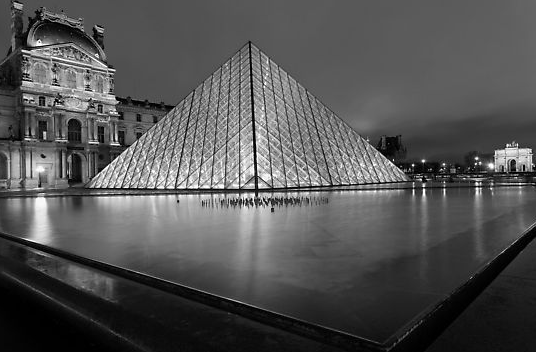
A New Idea for Liverpool
Likewise, Liverpool needs its own cultural landmarks. Of course, it should focus on such ideas and principles as diversity, cultural development and collaboration. Liverpool railway station can be the necessary ground for creation of a cultural landmark of the city. The station is already a link that unites major destinations in the city and connects it to other areas and cities. It bears a significant symbolic meaning that can make the future landmark a very strong emblematic representation of Liverpool’s identity.
Thus, the new facility will be connected with the existing railway station. Moreover, the two objects will be seen as the one. Apart from the symbolic load, this will enable many people from Liverpool as well as other cities and even countries to visit the new attraction. The new facility may be called the Liverpool Pyramid. This will be a multistoried building having three major parts united by the central hub (see fig. 4). The facility will also ‘unite’ the banks of the Georges River. As has been mentioned above, the area along the river is already being integrated into the urban area (Building our new city 2014). Therefore, the new facility will be also easily integrated into the city’s infrastructure.
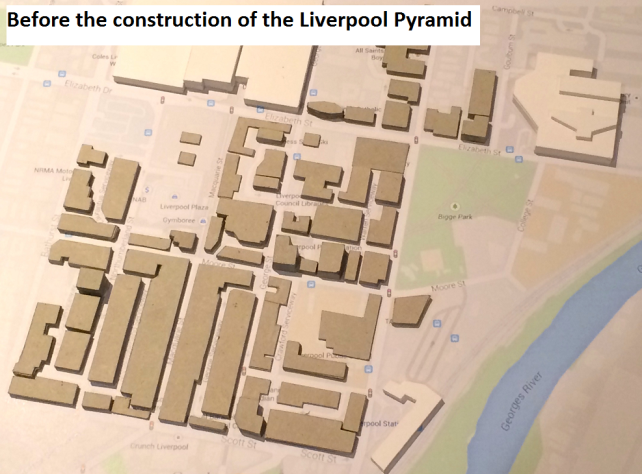
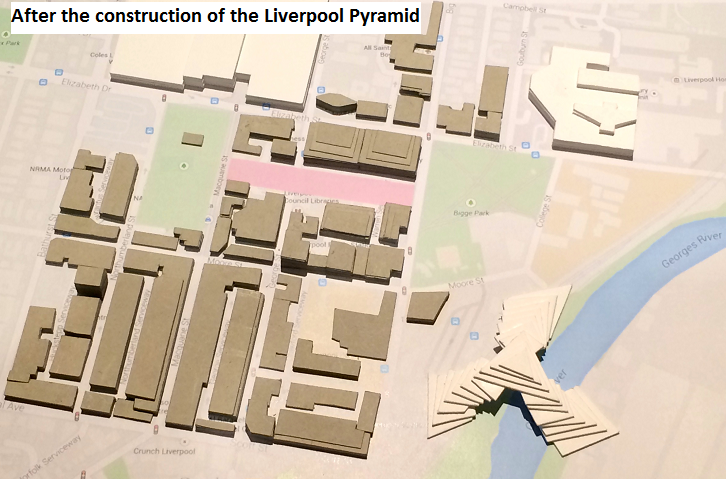
The Liverpool Pyramid will house a set of museums, exhibition areas, a concert hall, cinemas, gift shops, some sport facilities, an area for performing arts and area for cafes. The new facility has to reveal the city’s diversity with a focus on ethnic and religious diversity. Thus, there should be areas where Christian (Catholic, Anglican and Eastern Orthodox) and Muslim values are manifested. It is also important to make sure that there are areas that are developed in terms of cultural traditions of some European, Asian and Middle Eastern nations. Clearly, the set of museums should have permanent exhibitions devoted to these cultures and/or history of people coming from different parts of the world to Australia and Liverpool, in particular. A particular space should be devoted to collaboration of different ethnicities in Liverpool.
It is necessary to add that a specific and quite symbolic architecture of the Liverpool Pyramid will contribute to the contemplation concerning the emblematic meaning of the building. Of course, the name is quite conspicuous (it can be changed to the Liverpool Bridge or the Liverpool House) but the structure itself implies various meanings and associations. This can be a bridge, a pyramid, a tree, a triangle and so on. All these associations are related to such concepts as knowledge, culture, links, and diversity. Hence, the very architecture will make people relate the Liverpool new facility to a cultural spot where people share their knowledge and ideas.
Conclusion
Liverpool is one of the oldest cities of Australia that have rich culture. The city have been transforming in accordance with various trends that occurred in the society. The most relevant trend existing in the contemporary Australian society is diversity. Therefore, the city should integrate this concept into its urban planning. The city still does not have a cultural landmark that will be an emblematic representation of Liverpool’s rich culture and diversity. The Liverpool Pyramid will become the landmark the city needs. This landmark will enable inhabitants of Liverpool to learn about their city and the country they live in. They will also have a reminder that their society is highly diverse, which is one of its strengths. This will be the place where people will be able to get together and learn more about each other. The new facility will also attract people from different cities of Australia who will be eager to learn more about the most recent advances in the Australian culture.
Reference List
Building our new city 2014, Web.
Channel 9 news Carnes Hill precinct clip 2015, Web.
Huppatz, DF 2015, ‘Sydney Opera House, Australia’, in G Lees-Maffei (ed), Iconic designs: 50 stories about 50 things, Bloomsbury Publishing, New York, pp. 42-46.
O’Callaghan, J & Hogben, P 2014, ‘Leisure in Sydney during the long boom’, in P Hogben & J O’Callaghan (eds), Leisure space: the transformation of Sydney, 1945-1970, NewSouth, Sydney, pp. 14-30.
Slavicek, L 2009, I. M. Pei, Infobase Publishing, New York.
Thompson, S 2012, ‘Diversity, difference and the multi-layered city’, in R Freestone (ed), Urban planning in a changing world: the twentieth century experience, Routledge, New York, NY, pp. 230-249.
‘Welcome to Sydney’s best-connected, and most welcoming, new address’, 2014, Your Liverpool Lifestyle Magazine, no. 21, Web.